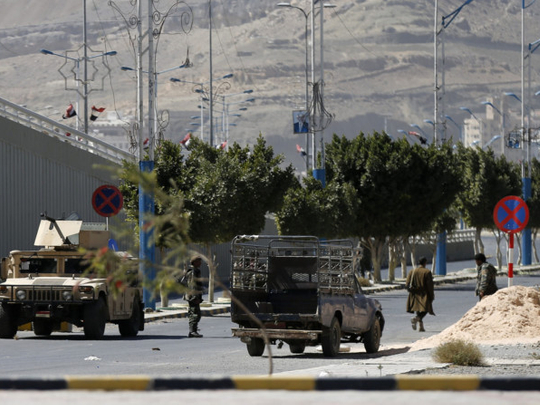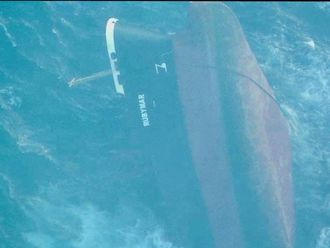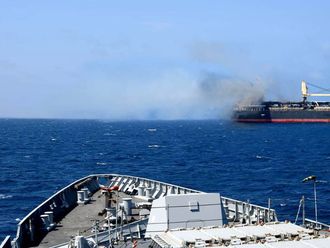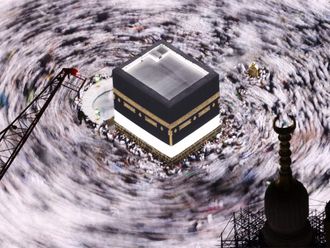
Fierce fighting in Yemen on Monday between the US-backed government and Al Houthi rebels, who seized the capital in September, threatened to undermine efforts to battle Al Qaida’s potent Yemeni franchise, which claimed this month’s attack on a French magazine. The clashes, which focused on the presidential palace in Sana’a and a military area south of it, mark the biggest challenge yet to the government of President Abed Rabbo Mansour Hadi, with one official calling Monday’s move by the Al Houthis “a step toward a coup.”
What does this mean for Al Qaida in Yemen?
Al Qaida in the Arabian Peninsula, which Washington considers to be the group’s most dangerous branch, has been thriving from the fallout of Al Houthis’ expansionist aspirations in central Yemen, where Sunni tribesmen predominate. The turmoil has taken a sharply sectarian tone, pitting Sunnis against Shiites, to the benefit of Al Qaida. The militant group claims to be present in 16 out of Yemen’s 21 provinces.
With the gradual ascendance of Al Houthis to power and the waning of Hadi’s clout, the US risks losing a faithful partner and ally in its yearslong campaign against AQAP, likely harming that effort.
Who are the Al Houthis?
The Al Houthi movement started as a small religious group called “The Believing Youth,” who sought to revive Zaidism, a Shiite sect to which some 30 per cent of Yemenis, mainly in the north, belong. After the 2003 US-led invasion of Iraq stoked anti-American sentiment in the region, Hussain Al Houthi capitalised on popular anger to launch an armed revolt against the US-allied president at the time, Ali Abdullah Saleh. Government troops killed Al Houthi in 2004, but his followers continued the bloody northern insurgency he started against Saleh, a longtime autocrat, until a 2010 cease-fire. Known now for the name of the movement’s founder, Al Houthis also enjoyed wide support among disenchanted tribesmen who had suffered from Saleh’s military campaigns.
How much territory do they control?
After Saleh’s 2012 ouster following Arab Spring protests, the Al Houthis’ power grew. Battling their way from their northern heartland in Saada toward the south, they struck blows against the government as well as another old enemy, the Hashid tribal federation. That group, also Zaidis, was allied to the Islamist Islah party — the Muslim Brotherhood’s branch in Yemen — as well as some top military generals. In September 2014, the Al Houthis seized the capital after besieging it for weeks under the pretext that they wanted a new government and the reinstatement of fuel subsidies. Since then, the Al Houthis have overrun at least eight provinces including Hodeida, which has the country’s second largest port. For weeks, its fighters have been deployed to the eastern province of Marib, which is rich in oil and natural gas. However, the presence of strong local tribes in Marib will likely prevent a full takeover.
Are the Al Houthis aligned with Iran?
Critics say the movement, now led by 33-year-old Abdul Malek Al Houthi, is heavily backed by Iran. At demonstrations and in battle they often scream out a variation of a popular Iranian slogan also chanted by Shiite militants in Iraq and supporters of Lebanon’s Hezbollah: “Death to America, death to Israel, a curse on the Jews and victory to Islam.” Yemeni authorities have seized ships carrying Iranian weapons allegedly destined for the Houthis in recent years. The Houthis deny that they are linked to Iran.
Is this a sectarian conflict?
The Al Houthis’ war in northern Yemen was not sectarian in nature, but a score-settling between old foes. Today’s struggle, which pits Al Houthis and their erstwhile bugbear Saleh against the Islah party, the Al Ahmar tribe, and military leaders, is also more about political power than anything else.
Will Yemen split?
Most Yemenis want a federal system that would grant more power to local authorities. Both Al Houthis and many in the once-independent south would like to reconstitute some version of a north-south divide, while Hadi and his supporters want a six-region scheme, as put forth in the draft constitution. Southerners, who had an independent communist state until reunification in 1990 — say six-region federalism would leave the north with more power — four provinces versus only two in the south. Al Houthis reject the six-region plan over concerns it would diminish their power in areas they have already seized. There is an international dimension as well. The US and Saudi Arabia back Hadi, and the Saudis view Al Houthis as both an Iranian proxy and a terrorist organisation that threatens regional stability. Riyadh fears the group seeks to create a mini-state in northern Yemen, which borders Saudi Arabia.












